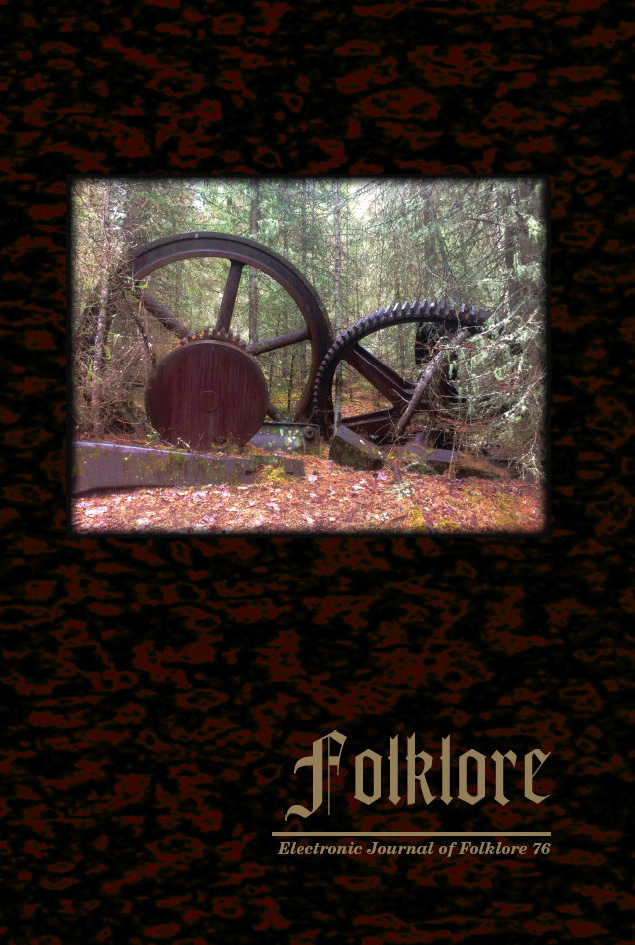Zaum (Beyonsense, Educanto) in the Komi Tradition of Incantations: Revisiting the Issue of Origins
Zaum (Beyonsense, Educanto) in the Komi Tradition of Incantations: Revisiting the Issue of Origins
Author(s): Anatoly PanyukovSubject(s): Customs / Folklore, Cultural Anthropology / Ethnology, Culture and social structure
Published by: Eesti Kirjandusmuuseum
Keywords: borrowings; folklore; incantation zaum; Komi-Zyrians; rhythm; rhythmical matrix; structure;
Summary/Abstract: In order to provide a general overview of particular aspects of the topic in the title of this article, the author suggests having a look at one specific example from the Komi tradition of incantations. In the analytical part of the article, the author makes a hypothesis: Linguistic transformations verified as zaum (beyonsense, educanto) can occur as a result of compression of a source text (pretext, prototext) into a rhythmical matrix of the act of incantation. By the rhythmical matrix we mean a complex fixed structure of rhythmical subsystems: sound-rhythmical, rhythmo-melodic, metrical-rhythmical, and other dimensions. The compression of the prototext into the text of an incantation can have a non-linear character and be the result of a peculiar strategy of the transfer of knowledge pertaining to incantations from a teacher to a student. By virtue of a number of specific psychophysiological attitudes and limitations, the student does not remember the text of the incantation, but reproduces some deeper levels of the magical and ritual performative related to the rhythmical matrix. And it is into the matrix reproduced by his or her consciousness that a new verbal stream made up of the components of the source text, fixed in the short-term memory of the student, is incorporated.
Journal: Folklore: Electronic Journal of Folklore
- Issue Year: 2019
- Issue No: 76
- Page Range: 39-56
- Page Count: 18
- Language: English

